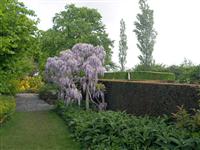 Make the Right Plant Selections in Garden Design
Make the Right Plant Selections in Garden Design
Choosing the right plants for the right purpose is often the difference between a good garden designer and a not so good one. In order to do this effectively gardeners and landscapers have to have knowledge of how different elements of the environment impact upon plant growth, and particular types of plants.
Don’t make planting mistakes
This extremely detailed course is a go-to resource for anyone involved in making planting decisions. Discover all the factors which influence growth of the main plant groups so that you can decide on their suitability for any particular location. Also learn about how to establish new plants in gardens and what they require in terms of ongoing maintenance.